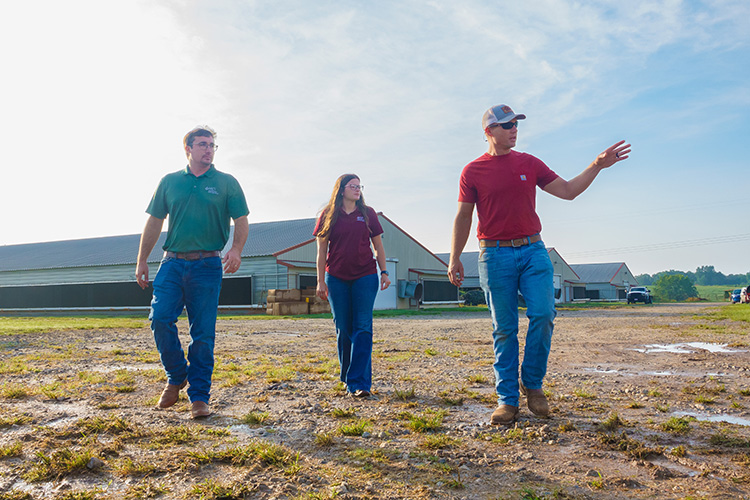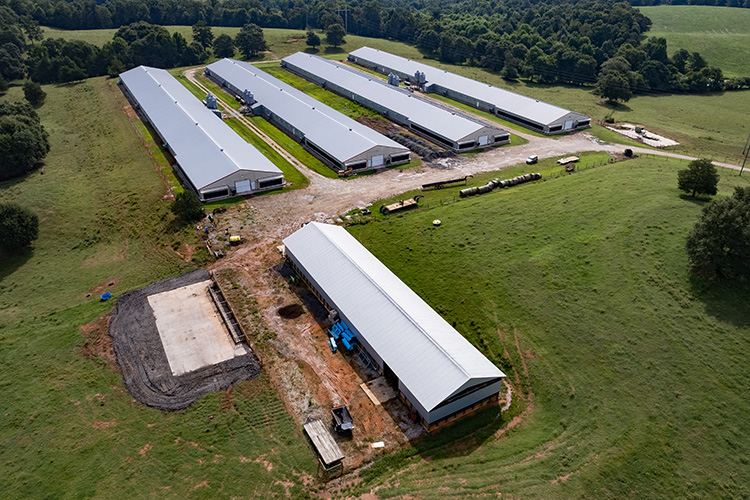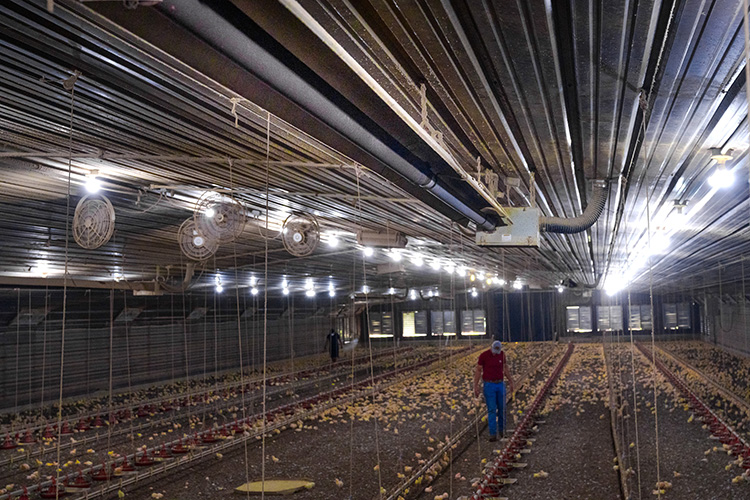In 2017, Zach Hightower bought Shoal Creek Farms, a 250-acre cattle and poultry operation in Madison County, Georgia, after leasing it for several years.
In the last few years, Zach has applied for Natural Resources Conservation Service (NRCS) assistance through the Environmental Quality Incentives Program to help address several problems on the farm. Some of these applications were approved quickly, such as assistance to build a combination stack house and poultry mortality and litter facility, and to update the cattle watering trough and feeding pads. But, due to lack of available funding, his application for assistance with updating his poultry houses to reduce energy use and be more energy efficient was delayed.
In 2023, however, his application was approved for about $60,000 in assistance for radiant heaters and attic insulation for his four poultry houses thanks to additional funding provided by the Inflation Reduction Act. That approval came just in time.
“[Zach’s] Conservation Activity Plan was about to expire,” says Wade Mize, the NRCS District Conservationist in Commerce, Georgia. “So, the availability of Inflation Reduction Act funds for [his] poultry improvements was timely.”

Zach visited Wade at the advice of his father-in-law, Chris Jones, a fellow cattle and poultry farmer. Chris suggested contacting NRCS, which helps farmers invest in their operations, boost agricultural economies, and improve the quality of air, water, soil, and habitat. Wade explained to Zach that NRCS could develop a full-farm conservation activity plan that would help him address all his conservation needs for his cattle and poultry. Having a conservation plan, Wade added, would also best position Zach to apply for help.
Back when he was leasing the operation, Zach would often ask himself several questions. If this was my farm, what would I do to make day-to-day operations more efficient? And how could I, as a new farm owner, financially make my dreams a reality? He knew the answer to the first question but looked to NRCS to help him with the second.
On the poultry side, the area for stacking poultry litter was above a creek, which he knew was less than ideal because the site posed potential drainage-related environmental issues. In addition, attic insulation and heaters in the four poultry houses on the property needed upgrades.

On the beef side, the problems were so bad, “I dreaded spring,” says Zach. “The water trough and feeding areas were on dirt and needed to be winterized. By the time winter ended and warming weather brought spring rains,” he says. “These areas were two-to-three feet deep in pure slop. Every year, I would haul it off somewhere on the farm, spread it out, haul back in some red dirt from elsewhere on the farm, and level it out.” It was a nasty process to maintain the trough and feeding areas and make them safe for the cattle, explains Zach, who says he likes things to be as nice as possible.
Zach completed the NRCS applications he hoped would lead to the changes he so desperately needed. First, he applied for assistance to build a combination stack house and animal mortality facility, a place where daily poultry mortality and litter could be composted before being spread as fertilizer on pastures. Next, he applied to update the cattle watering trough and feeding pads. And finally, he applied for an energy audit to determine exactly what was needed to cut down on excess heat and power usage in the poultry houses.
Funding for the stack house and pads was approved first, with Zach receiving assistance of about $80,000 to build a combination 6,800 square foot stack house and mortality and litter facility, and the cattle pads. Construction on the combination facility was completed in August 2019. The next year, water trough pads were put in and then feeding pads were installed for his herd of 100 Angus Mace.

Then, this past year, the funding for the poultry house projects was approved. “I knew once I got approval for my application, the improvements would save me tremendous amounts of money every year,” says Zach.
Attic insulation was installed in the summer and the radiant heaters before the fall, both in 2023 between flocks. His flocks vary between 43,000 and 46,000 birds, depending on the season, and take a little more than a month to raise to marketable size. Completion of improvements approved in the energy audits, he says, will almost double the number of heaters he’s relied on since purchasing the farm. “My heating capabilities will be so much more efficient now,” he says. “We’re just trying to make the farm operate more efficiently.”
While he didn't get everything at once, working hard on his conservation plan's goals, maintaining a current application for programs, persistence, and good conservation work paid off for him. “It was much smarter financially to apply for NRCS help to make improvements than to ask a bank for a loan,” says Zach. “The assistance I’ve received is going to help me greatly on my gas bill, my heating, and with my overall grow-out of flocks. Having the support and guidance of NRCS has allowed my dreams to become a reality.”
Tom Oder is a Freelance Writer for Georgia Grown Magazine


